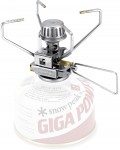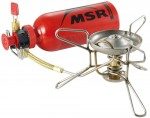How Can We Help?
As mentioned in the Trailman's Handbook, there are basically three kinds of cooking sources
- Open Fire
- Camp Stoves
- Lightweight Backpacking Stoves
But within each category, options can be broken down further. All options involve planning to ensure materials are available for the duration of the trip.
Open Fire
You'll either work with an open fire, so things like grilling burgers, steaks, or pots hung over the flames, or the charcoals for making foil meals, or using Dutch Oven. Charcoal meals can also mean using prepared charcoals briquettes that you might light with a charcoal chimney or just around a campfire.
| Pros | Cons | Safety |
| You can prepare meals differently with fire than you can with the other options. For ex. you can't flame grill with a lightweight stove. |
|
Keeping cognizant around a fire. Also: |
Camp Stoves
Camp stoves generally fall into two categories - smaller propane camp stoves about the size of a briefcase that many are familiar and use for family camping, and larger multiburner stoves that are about the size of a small table or desk and attach to barbecue sized propane tanks. These are generally more convenient for cooking or heating items/water in larger quantities for larger groups.
| Pros | Cons | Safety |
|
|
|
Lightweight Backpacking Stoves
The four primary types of lightweight backpacking stoves are: canister stoves and liquid fuel stoves, alcohol fuel stoves and wood burning fuel stoves.
Canister stoves are stoves whose fuel come in a little canister and usually use a mixture of isobutane and propane (ex. JetBoil and Snow peak GigaPower). While this mixture is ideal for a light-weight canister, it doesn’t perform solidly in very cold weather, so you’ll need to keep your canister warm. At higher elevations be sure to bring extra fuel. Because the fuel is enclosed in a self-sealing canister, these stoves are the safest and easiest to use for a beginning backpacker. For these types of stoves, unless the stove comes with an integrated lighter, you have to use matches, a lighter, or a flint and steel to light it. Liquid fuel stoves outperform propane stoves, especially in colder weather. Propane stoves are less efficient when they are low on fuel, whereas liquid stoves perform well down to the last drop of fuel.
| Canister Stove | Liquid Fuel Stove | Alcohol Fuel Stove | Wood Burning Stove>/td> |
 |
 |
 |
 |
| Pros | Cons | Safety |
As in Camp Stoves
|
|
|
Sources: